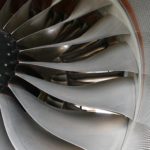NASA and SpaceX are finalising minor changes to the Crew Dragon spacecraft before its first operational mission to the International Space Station (ISS) at the end of October.
The alterations will incorporate data gained from the Demo-2 flight of the Crew Dragon this summer into the design of the spacecraft. These include changes to the heat shield and a sensor used to measure altitude for parachute deployment.
Changes to heat shield and parachute deployment
Hans Koenigsmann, vice president of build and flight reliability at SpaceX, said the changes would include alterations made to bolts that link the capsule. He said: “One issue involves the heat shield on the spacecraft. We found on a tile a little bit more erosion than we wanted to see. We saw some flow phenomenon that we really didn’t expect, and we saw erosion to be deeper than we anticipated.”
Koenigsmann added the alteration was “relatively easy to fix” and was limited to a very small area of the heat shield which wouldn’t put the Demo-2 crew in jeopardy.
The parachute deployment took place within what Koenigsmann termed an “allowable box” for re-entry but had resulted in it being deployed lower than expected. SpaceX will change an instrument using barometric pressure to determine altitude to correct the problem.
Spacecraft upgrades before certification
The changes will be made before NASA formally certifies the Crew Dragon spacecraft for operational missions. Kathy Lueders, NASA associate administrator for human exploration and operations said further capabilities would be added to the Crew-1 mission, which included being able to dock with two different ports on the station. She said: “The big chunk of the certification is in those upgrades.”
Most of the rest of the work towards the certification of Crew Dragon has been completed, she said, including a program-level certification review. “We’re just in the process of finalizing the last few pieces of our documentation needed to close our human rating certification plans.”
Crew announced before planned launch on October 31
The final certification will take place at the flight readiness review for the Crew-1 mission, about a week before the planned launch on October 31.
Other upgrades, include the ability to support four people and remain in orbit for 210 days and an improved backshell that will increase the wind limits for reentry.
The four astronauts who will fly on the Crew-1 mission have been named as NASA astronauts Mike Hopkins, Victor Glover and Shannon Walker, and JAXA astronaut Soichi Noguchi. They have selected the name “Resilience” for their Crew Dragon spacecraft.
Hopkins said: “I think all of us can agree that 2020 has certainly been a challenging year. The name ‘Resilience’ is really in honour of the SpaceX and NASA teams and, quite frankly, it’s in honour of our families, our colleagues, our fellow citizens, international partners and leaders, who have all shown that same quality, that same characteristic through these difficult times.”
Subscribe to the FINN weekly newsletter

